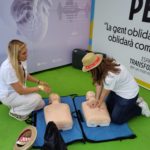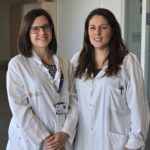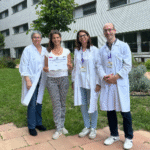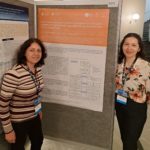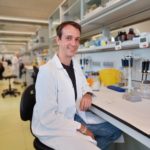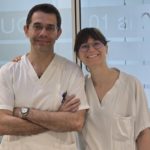
Treatment with durvalumab, a PD-L1 inhibitor monoclonal antibody, has become established recently as the standard therapy for patients with unresectable stage III non-small cell lung cancer (NSCLC) who do not show progression after concurrent chemoradiotherapy (cCRT). This is based on the results of the PACIFIC trial. However, in a significant percentage of cases, the disease eventually progresses, which has driven the search for new therapeutic strategies to expand the effectiveness of immunologic consolidation treatment.
The COAST study falls within this context, with its final results recently published in JAMA Network Open. This is an international phase 2 clinical trial that evaluated the efficacy and safety of durvalumab administered as monotherapy or in combination with two new monoclonal antibodies—oleclumab (anti-CD73) and monalizumab (anti-NKG2A)—as consolidation treatment after cCRT in patients with locally advanced, unresectable NSCLC. The study involved 73 centers worldwide, including Hospital de Sant Pau, through medical oncologist and researcher at the Institut de Recerca Sant Pau (IR Sant Pau), Dr. Margarita Majem.
“The participation in this study has allowed us to contribute to the development of immunotherapeutic combinations that have the potential to improve the prognosis of patients with a disease that is still difficult to treat in locally advanced stages,” notes Dr. Majem. “Consolidation treatment with durvalumab has represented a significant advance lately, but we know there is still room for improvement, and combinations with oleclumab or monalizumab point in that direction.”
Clinical Benefit in Response and Progression Rates
The study included 189 patients with stage III NSCLC who had not experienced progression after completing cCRT. Participants were randomized into three treatment groups for up to 12 months: durvalumab monotherapy, durvalumab with oleclumab, and durvalumab with monalizumab.
The results indicated that the two investigated combinations provided an added clinical benefit compared to durvalumab alone. Although the differences did not reach statistical significance, the researchers observed a higher objective response rate (ORR) and longer progression-free survival (PFS) in the combination arms. The median PFS was 21.1 months in the group treated with durvalumab and oleclumab and 19.8 months in the group with durvalumab and monalizumab, compared to 7.3 months observed with durvalumab monotherapy. Overall survival also appeared to improve with the combinations, although the data do not yet allow definitive conclusions in this regard due to the limited maturity of follow-up. Regarding safety, all three treatments showed comparable profiles with no new toxicity signals.
Complementary Immunologic Mechanisms
Mechanistically, oleclumab acts by blocking CD73, an enzyme that contributes to tumor immunosuppression through the production of adenosine, while monalizumab inhibits NKG2A, a receptor that suppresses the activity of NK cells and cytotoxic T lymphocytes. Both targets are involved in immune evasion that can occur after radiotherapy, which justifies their use as immunologic consolidation in this clinical context.
“The rational combination of immunotherapies with complementary mechanisms could become a key pathway for advancing the treatment of locally advanced lung cancer,” adds Dr. Majem. “These results reinforce the need to continue research along these lines, and indeed, they are already being evaluated in a phase 3 trial, PACIFIC-9, in which we hope to confirm their clinical benefit.”
With the publication of these results, the COAST study lays the foundation for a new generation of immunotherapeutic strategies that, if confirmed in larger trials, could expand the available arsenal against unresectable NSCLC and improve survival in this patient population.
Reference article:
Aggarwal C, Martinez-Marti A, Majem M, Barlesi F, Carcereny E, Chu Q, Monnet I, Sánchez-Hernández A, Dakhil S, Camidge DR, Pillet M, Brown M, Paliompeis C, Dowson A, Cooper ZA, Kumar R, Herbst RS. Durvalumab alone or combined with novel agents for unresectable stage III non-small cell lung cancer: Update from the COAST randomized clinical trial: Update from the COAST randomized clinical trial. JAMA Netw Open 2025;8:e2518440. https://doi.org/10.1001/jamanetworkopen.2025.18440


